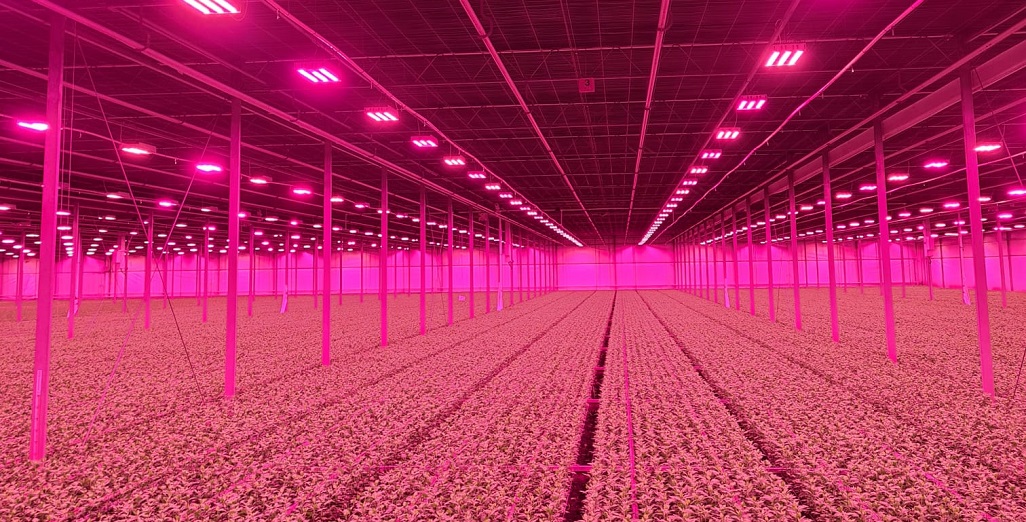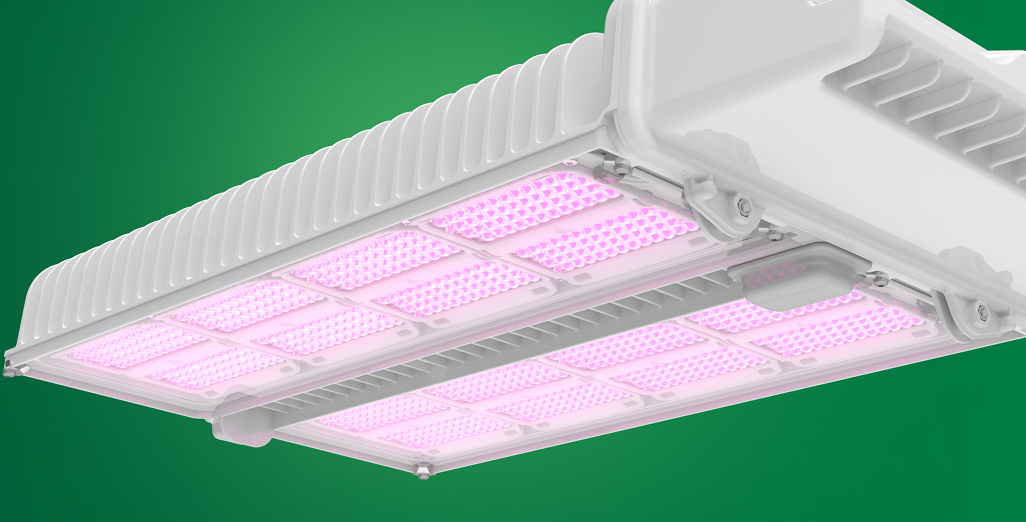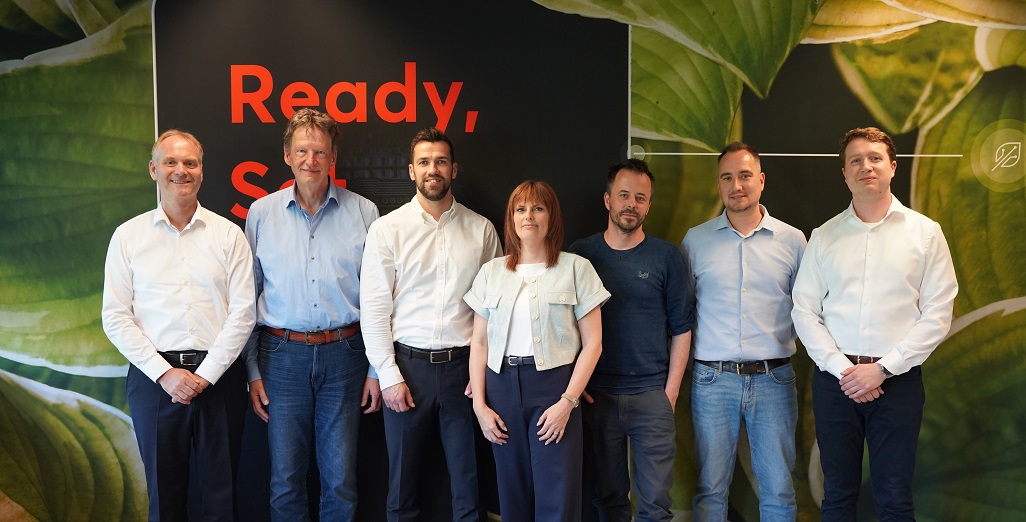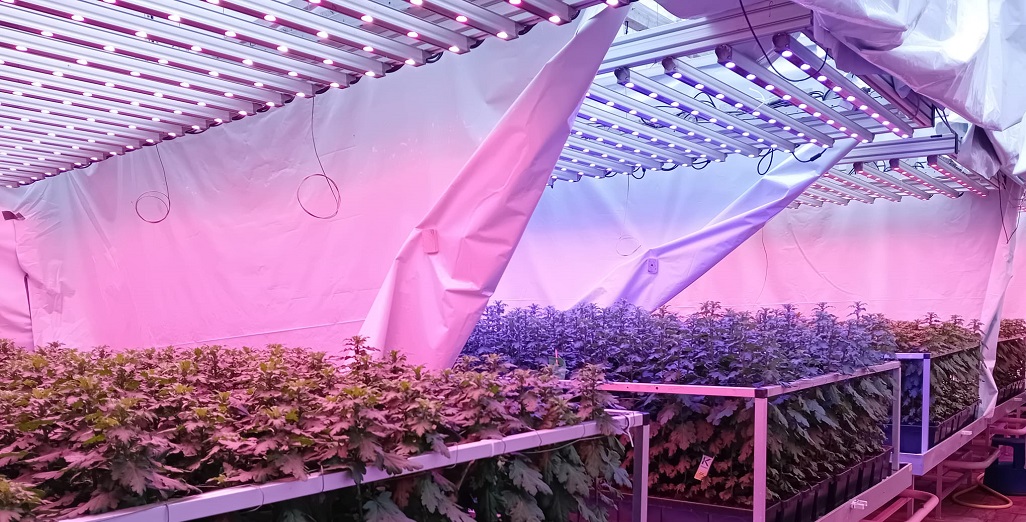Sign up here to subscribe to the Grower2grower Ezine. Every two weeks you will receive new articles, specific to the protected cropping industry, informing you of industry news and events straight to your inbox.
Jul 2020
Best of 2020 – Hydroponic Ginger

Best of 2020: By Dr Mike Nichols
While at a hydroponics conference in Adelaide some years ago I was asked about growing ginger using hydroponics. I expressed complete ignorance, but this stimulated my interest to investigate the potential of using what is becoming an well established production system for many crops but not a common one for the production of a root crop. My first approach was to revue the existing literature on the subject, and to put it succincly, this is veery sparce.
I discovered only three papers on the hydroponic production of ginger, namely Kratky (1998), Rafie et al (2003), and Hayden at al (2004), and numerous articles in the world wide web, on “how to”, but without any research findings.
Rhizome sowing young bud.
The Kratky paper is an interesting one proposing that the production of ginger using a non-circulating hydroponic method, in which essentially the plants were grown in plastic nursery flats filled with a growing medium, comprising a mixture of peat, vermiculite and perlite. The plastic nursery flats were suspended eventually some 4 cm above a static nutrient solution once the roots had moved throught the medium into the solution. The Hayden paper (from University of Arizona) was similar to some respects, except that instead of a “static” nutrient solution the growing medium was suspended above a tank in which the roots grew, and the nutrient solution was applied as a fine mist using aeroponics. The third (and simplest) system was developed in Florida using trays filled with a medium of coarse perlite. Plant spacing was 1.5 ft x 1 ft (1.35 x 0.3 m), and the crop was planted in March and harvested in the following January .
All systems appeared to work satisfactorily. The Arizona trial showed major disease problems when using peat as a growing medium (is it too hydrophyllic?), demonstrated the importance of a growing medium (perlite) for the rhyzomes (as opposed to no growing medium), and (interestingly) demonstrated that by heating the nutrient solution to 25C produced rhyzomes 50% larger. The crop was harvested 7-8 months after planting.
The Kratky paper also showed low yields without the use of a medium over the rhyzome, and the more medium volume the better, while the Florida paper merely shows that the hydroponic system produced nearly double the yield of a field soil system.
Young shoot produced by bud
THE WORLD SCENE
Ginger (Zingiber officinale) is a major spice crop, which also has some medicinal use (against nausea). It is the swollen root (or rhyzome) which is consumed in a wide range of foods and flavourings. There are over 2¾ million tonnes of ginger (root) produced in the world, but as a tropical/sub tropical crop the main production areas are to be found in India, Nigeria and PR China. (see Table 1) There has been litle changer over the years in the area or productivity of ginger. (Table 2). There is a small area of ginger produced in Australia (Queensland), which not only supplies the local market, but also exports worldwide. New Zealand imports ginger mainly from Fiji and Thailand.

The plant comprises several upright “grass like” leaves, which grow from the rhyzome. Roots are a mixture of both fiberous and thick (contractile?) roots, and the plant steadily expands by the production of new rhyzomes, which then produce stalks from which leaves grow. (see photograph).
Growing plant
The characteristic odor and flavor of ginger is due to up to three percent of fragrant essential oils, particularly gingerols and shogaols, which form from gingerols when ginger is dried or cooked. Zingerone is also produced from gingerols during this process; this compound is less pungent and has a spicy-sweet aroma.
The success (or failure) of ginger production is determined very much by the health of the “seed pieces” and the health of the soil. Diseases (particulary Fusarium, Pithium and pests such as Nematodes can seriously reduce production and using disease free planting material is highly desirable. In Hawaii the soil pathogen problem is so serious that it is normal to fumigate the soil with methyl bromide in order to control nematodes and fusarium, but as the crop is vegetative propagated (from “seed pieces” of the rhyzome) this is only partially succeful unless the “seed” material is of high health. In fact the Queensland bulletin on ginger production cites crop establishment in Australia being anything from as low as 5% to up to 95% due to soil borne pathogens. In Queensland pests and diseases pose the largest production concern to most ginger growers and are a constant threat to yields. All growers anticipate some losses every season due to disease. Most growers believe that a 10% losses in a patch are acceptable, but at times some patches can experience over 80% losses. The most common disease threat is Fusarium yellow rot.
Developing rhizomes
Because ginger is not grown in New Zealand, and introducing it via quarantine can be a tedious (and expensive) exercise we purchased imported dried ginger roots (rhyzomes) from a local supermarket from Fiji (or Australia) and from Thailand. It was unclear whether this might have been treated to prevent sprouting, but in fact it sprouted easily when planted in a moist growing medium in a greenhouse.
We started the rhyzome pieces in small pots filled with coir in September (Fiji source) November (Thailand source), and once they had produced a shoot and some roots they were transferred into large pots filled with coir (cocopeat), with a single dripper nozzle to each plant. A complete nutrient solution was applied with every watering, and the plants were grown in a greenhosue heated at 15C and ventilated at 25C.
Close up of developing rhizomes
In early May it was decided to examine the plants to determine whether any ginger had developed, and we were gratified to discover that the sytem had worked so succesfully. As one might anticipate the early planting had produced the greater yield, and clearly there could be some advantage in planting even earlier than September, so that the plants are much larger in mid summer when growth potential is greatest.
Is this the way to grow ginger hydroponically? The answer (in my view) is a clear cut no. The more sensible solution would be not to use pots but to grow the crop in beds filled with a good well drained growing medium (and coir certainly fits this bill), using hydroponics. The key factor would be to isolate the beds from the soil, either by using beds on benches or a layer of polythene film over the greenhouse floor. The importance of temperature is clear from the Arizona research, and this must pose the question of whether greenhouse production might even be an even better option in warm climates such as India or Queensland?
Of course the longer the plant is grown, the higher the yield, but also (apparently) the rhyzomes become more fibrous, so for candied ginger, the younger rhyzomes are likely to be more desirable. If the crop is being grown for the oils alone (such as for flavouring ginger beer), then the oil content (and differences in chemical constitution) is likely to be influenced by variety (genotype) and also might be influenced by harvest date, and by the way in which the crop has been grown.
Of course the big advantage of growing ginger hydroponically (apart from disese control) is that the rows can be close together because the major competition factors are for water oand nutrients, which are easilt providedby the hydroponnic system, and competion for light is minimal due to the upright nature of the foliage.
Mature plant showing rhizomes and root system.
REFERENCES
FAOSTAT (2020) Food and Agriculture Organisation of the United Nations. www.fao.org/faostat/en
Hayden A L, Brigham L A & Giacomelli G A (2004). “Aeroponic Cultivation of Ginger (Zingiber officinale) Rhizomes” Acta Hort. 659, 387- 402.
Kratky, B A. (1998). “Experimental non-circulating hydroponic methods for growing edible ginger”. Proceedings, 27th National Ag Plastics Congress. Tucson, Arizona, USA. Feb18-21, 1998. pp 133-137.
Rafie R A , Olcyk T, & Guerrero W (2003). “ Hydroponic production of fresh ginger roots (Zingiber officinale) as an alternative method for South Florida.” Proc.Fla State Hort. Soc. 116, 151-2.
I appreciate your comments. Please feel free to comment on the grower2grower Facebook page:
https://www.facebook.com/StefanGrower2grower/
CLASSIFIED
Subscribe to our E-Zine
More
From This Category

Ground cover: woven weed mat or solid plastic… or both?

Integration of Philips GrowWise control system with climate computer allows Huisman Chrysanten to light more effectively and efficiently

New Philips GreenPower LED toplighting force 2.0

Condensation re-visited

Philips GrowWise Research Center to test and showcase intelligent lighting

























